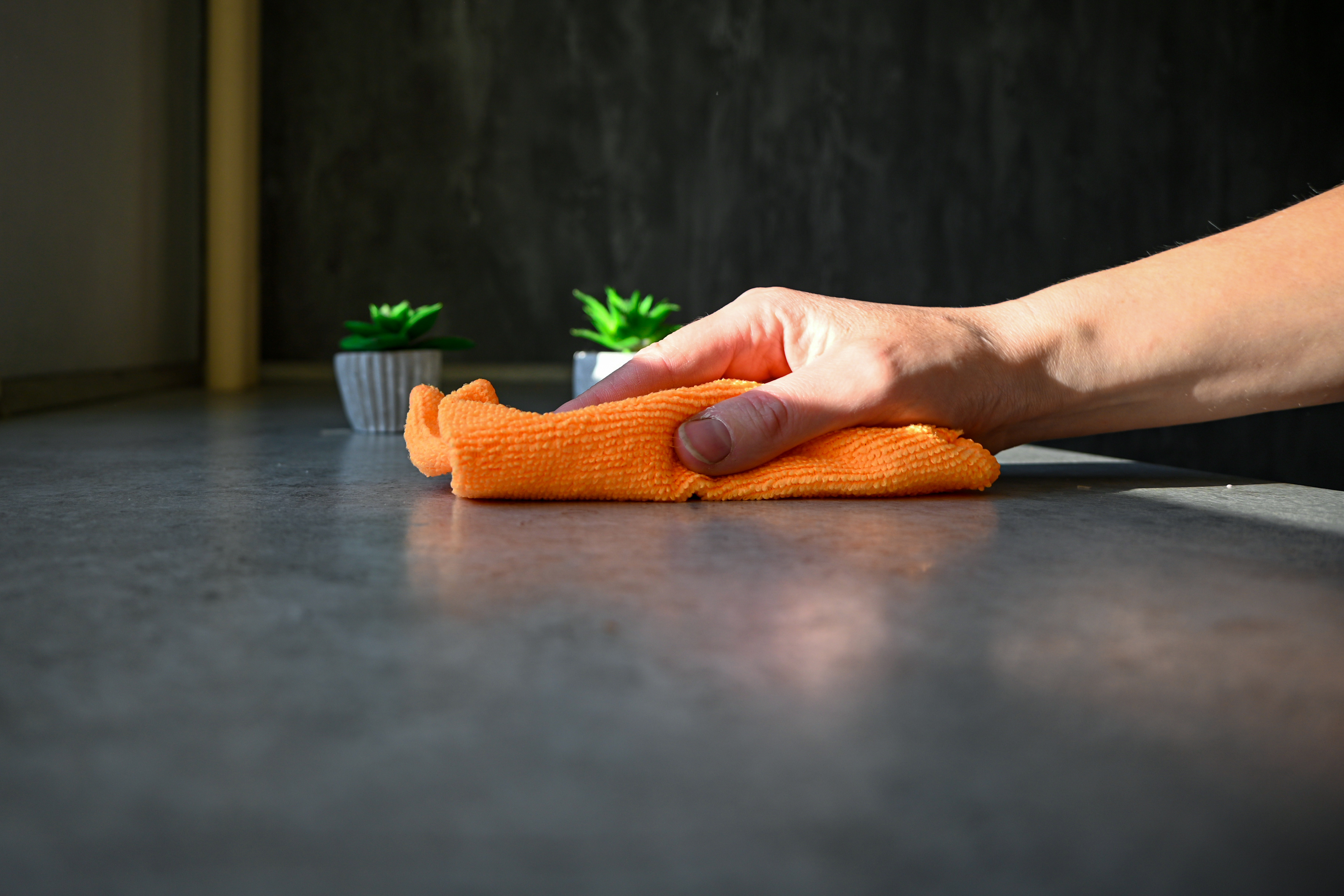Granite countertops are a timeless investment, valued for their natural beauty and durability. To keep them looking their best, it’s essential to understand how to seal granite countertops. Sealing provides a protective barrier against stains, moisture, and daily wear, allowing your surfaces to maintain their shine and strength for years to come.
Why Sealing Granite Matters
Granite may be strong, but it’s also porous. Without proper sealing, liquids such as wine, or juice can seep into the surface, leaving behind stains that are difficult to remove. Sealing helps prevent this by creating an invisible shield that repels liquids and resists etching (small marks or dull spots) caused by acidic substances like citrus or vinegar. A well-sealed countertop not only resists damage but also enhances the natural shine of the stone, keeping your kitchen or bathroom looking polished and inviting.
Beyond aesthetics, sealing granite extends the life of your countertops. It minimizes the risk of long-term discoloration and wear, ensuring that your investment continues to add value and elegance to your home.
How Often to Seal Granite
One of the most common questions homeowners ask is how often to seal granite countertops. The general recommendation is every one to two years, but usage plays a role. High-traffic kitchens may need more frequent attention, while a guest bathroom vanity may go longer between applications.
A simple way to determine whether it’s time to reseal is the water test. Place a few drops of water on the surface. If the water beads up, your seal is still intact. If it soaks in and darkens the stone, it’s time to reseal.
How to Seal Granite Countertops (Step-by-Step)
Learning how to seal granite countertops is straightforward, and with the right products, it can be done in an afternoon:
- Clean the surface thoroughly. Use a pH balanced cleaner designed for stone, such as Evolution Design’s EvoOxy Natural Cleaner. Avoid harsh chemicals, bleach, or abrasive cleaners, which can damage the granite and strip away sealant.
- Dry the surface completely. Moisture left behind can interfere with the sealing process.
- Apply the granite sealer. Follow the manufacturer’s directions for even coverage across the surface. A soft cloth or applicator pad works well for spreading the product.
- Allow the sealer to absorb. Give it the recommended amount of time to penetrate the stone.
- Wipe away any excess. Buff the surface to remove residue, leaving behind a smooth finish.
- Cure before use. Let the countertop rest for the specified curing time to ensure maximum protection.
With these steps, your granite will be well-protected and ready to shine again!
Maintenance Between Sealings
While sealing is critical, everyday care plays an equally important role in granite countertop maintenance:
- Wipe spills immediately. This prevents liquids from having the chance to stain, especially substances like coffee, red wine, or cooking oils.
- Use gentle cleaners. Stick with mild, pH balanced products and avoid acidic or abrasive solutions.
- Protect with cutting boards and trivets. Granite is durable, but sharp knives and hot pans can still leave scratches or marks over time.
With consistent care, you’ll reduce the need for frequent resealing and keep your surfaces looking flawless.
Lasting Beauty with Expert Support
Knowing how to seal granite countertops empowers you to protect your home’s investment and maintain its elegance. The process is simple but highly effective for keeping granite stain-resistent, shiny, and durable.
For homeowners, Evolution Design is here to help with professional guidance on sealing granite, everyday care, and even new countertop installations. Whether you need advice on the best products or are ready to upgrade your space with custom granite, our team provides the expertise you can trust.
Contact Evolution Design today to learn more about countertop care or to explore beautiful new options for your home.

